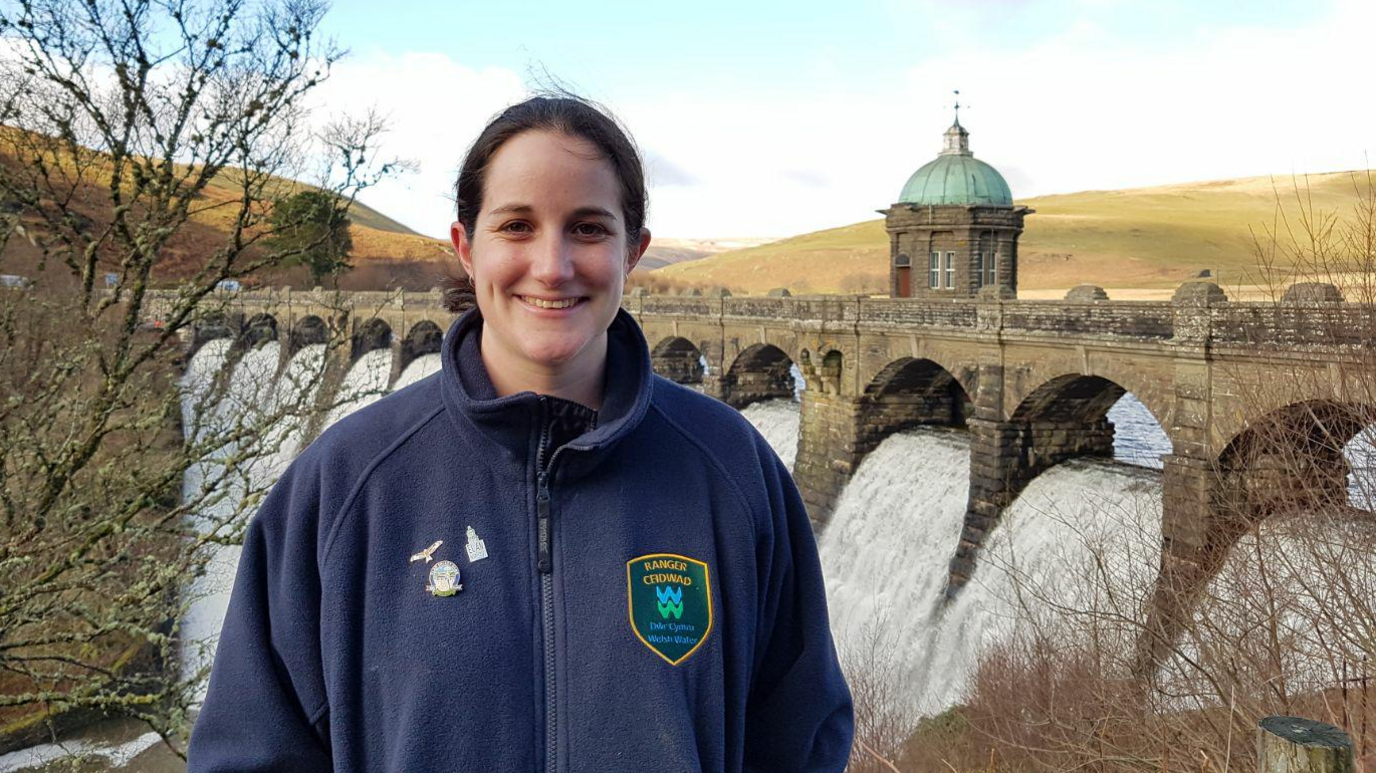Welsh dams that helped save Birmingham turn 120

The picturesque Craig Goch dam, is among four in the Elan Valley celebrating their 120th birthday
- Published
It has been 120 years since four striking dams in mid Wales were created to supply clean water to a polluted and rapidly growing Victorian Birmingham.
Opened by King Edward VII in 1904, the Elan Valley dams have held back 50 million cubic metres of water - about 20,000 Olympic swimming pools - ever since.
Now supplying water to mid and south Wales too, the structures near Rhayader in Powys have stood the test of time, and are now staples of the area's landscape.
"They'll outlive us all, we expect them to still be there in another 120 years," said Welsh Water's Elan Valley expert Jen Newman.
Heatwave reveals lost mansion loved by Shelley
- Published17 August 2022
Why Birmingham's water comes from Wales
- Published28 September 2016
Victory for dam bomb campaigner
- Published31 August 2010
The four dams; Craig Goch, Garreg Ddu, Pen y Garreg and Caban Coch, were built by the Birmingham Corporation Water Department, starting in 1893.
The Elan Valley site was identified by Joseph Chamberlain, father of future-prime minister Neville Chamberlain, who was elected mayor of Birmingham in 1873.
"Birmingham was going through a huge industrial revolution, massive population boom but it doesn't have any big rivers going into it," explained Ms Newman.
"There were smaller rivers and they became polluted very quickly, so disease was rife; dysentery, diarrhoea, all the usuals.
"Joseph Chamberlain knew, to save his city, he needed to get clean water to it and very quickly."

Jen Newman is Welsh Water's Elan Valley estate manager
After the site was identified, the company was able to acquire the Elan Valley via a compulsory purchase following an 1892 Act of Parliament.
However, what was good for the residents of Birmingham, was less so for the local population.
"The people of the village had no say," Glyn Webster at Elan Valley Visitor Centre previously told the BBC.
Two large manor houses and about 44 properties were demolished, including 18 farms, a small mill, a school and a church.
"About 100 people had to move," said Mr Webster.
"Most of the villagers were tenant farmers and only the landowners were given a small amount of compensation."

The dams were constructed in just over a decade leading up to 1904
Ms Newman said the site was chosen as it is almost the "perfect place" for such a project.
It had high rainfall, the riverbed was the right type of rock and the valleys were nice and narrow - ideal for a dam, or four, according to Ms Newman - and evidentently also Mr Chamberlain.
In just over 10 years the four dams had been built and water began flowing, very slowly, to the midlands.
"The pipeline is ridiculous," said Ms Newman.
"It's approximately 70 miles (112km) long and goes from Elan Valley all the way to the Frankley Reservoir in Birmingham... completely by gravity."
"The gradient is one in 2,300, so for every 23m, there's a 1cm drop... it trickles at about one mile an hour and takes three days to get there."

The Garreg Ddu dam, in the lower Elan Valley, is completely submerged and serves to hold back water upstream so it can be extracted
In addition to their functional uses, each of the four dams attracts thousands of tourists and regularly feature on thousands more Instagram feeds.
Civil engineer James Mansergh, who is "not celebrated anywhere near enough", according to Ms Newman, was chief designer of the project.
"He didn't just build a dam for its for its purpose of holding water back, he also built them very beautifully," she said.
"The style is called Birmingham Baroque, which is a kind of a gothic style. You kind of almost see it out of something of kind of The Hound of the Baskervilles.
"We've got these towers built with the with the copper green roofs on which have kind of become iconic."

The Caban Coch dam is the lowest and most significant, holding back a whopping 35 million cubic meters of water
Ms Newman estimated that the dams draw about half a million people to Rhayader and the surrounding area every year.
"Rhayader is such an amazing community of people that are so proud of the dams and of the Elan Valley. It's a really important part of their tourism," she said.
"I love it when the dams overflow, the same as everybody else does, and everybody flocks here.
"I do pinch myself a bit that I get to work in such a beautiful area."
Related topics
- Published5 March 2023

- Published10 February 2023
